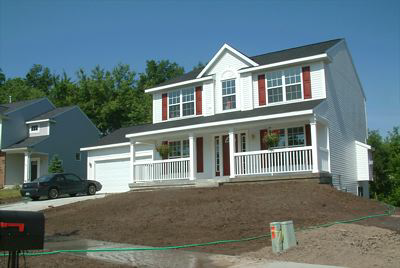No Light Rail in Vancouver!
Impact Fees Are the Wrong Tool for Any Job

In The Vanishing Automobile and Other Urban Myths, I suggested that impact fees might sometimes be a good way for cities to pay for the costs of growth. I have since changed my mind. Impact fees are bad under any circumstances.
I was persuaded of this when I reviewed housing affordability in urban areas across the country. I realized that the cost of existing homes closely tracks the cost of new homes. So when government regulations or fees increase the cost of new homes, the price of existing homes also rises.

Will the taxes paid on this new home pay for the services its residents consume?
Impact fees may add to municipal revenues. But they also create windfall profits
for sellers of existing homes. Since existing homeowners tend to be wealthier than
first-
Studies show that the demand for new housing is inelastic, an economic term meaning that a small change in the supply leads to a large change in the price. One way of looking at this is that people need a place to live and will pay what it takes to get one.
Let’s say a city imposes a $25,000 impact fee on the cost of new homes. The price of housing may not immediately grow by $25,000. Instead, builders may slow the rate of construction a bit because they fear some homes won’t sell at a $25,000 higher price. This contraction in supply leads to a large increase in price. Pretty soon, home buyers are paying pretty close to $25,000 more for all homes in the market.
Of course, if people have an alternative, such as buying homes in an adjacent city that hasn’t imposed an impact fee, they may do so. But as one city in a region imposes impact fees, others see the revenue possibilities and soon follow suit. Pretty soon all housing in the region is less affordable.
Impact fees are often based on claims that growth, particularly low-
If this same method were applied to existing neighborhoods, however, it would produce the same result. What they miss is that retail, commercial, and industrial areas also pay taxes, and those taxes are generally much greater than the services they consume. Why? Because all of them pay taxes for schools, yet only residential areas “consume” school services.
Even if it were true in some area that growth does not pay for itself, impact fees are the wrong solution because there is no guarantee that the buyers of new homes are newcomers or that newcomers will buy new homes. Thus, the impact fees fail to target growth.
The other problem with impact fees is that there is no guarantee that the collected fees will actually be used to provide transportation facilities for the people paying the fees. A true user fee gives both the users and the producers signals about where new facilities are needed and how much they cost. Impact fees do not provide such signals.
For example, many cities use impact fees for transportation. But there is no assurance that the people who use the facilities built with those fees will be the ones who paid the fees.
User fees — fees for actually using a good or service — are the best way to pay for things. This means water fees for water actually consumed, road tolls for actual driving on the roads, and so forth. Impact fees are not really a fee; they are a tax because the people paying the fee are not necessarily getting something in return.
If true user fees cannot be used to pay for something, the next-
In general, growth does pay for itself. In particular, impact fees do far more harm to a community or region than good. Cities should replace such fees with other forms of revenue or, better yet, cut the fat out of their budgets so that they can live on existing revenues.
16
Trackback • Posted in Regional planning
Reprinted from The Antiplanner